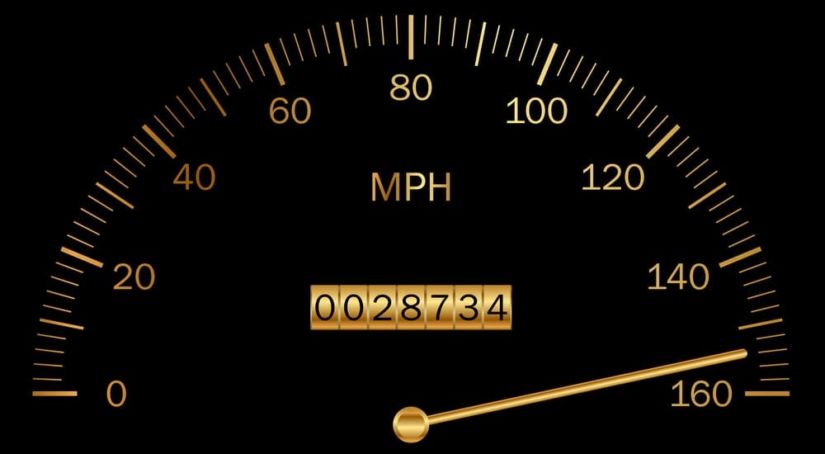When you’re shopping for a used car, it can be stressful when thinking about the uncertainty of that car’s future. Just how many more miles can you eek out of that clunker? Many people have the conception that used cars will not be reliable as they age, especially if they are already older and have some mileage on them. Maybe this was true at one point, but nowadays, with newer technology and better ways of maintaining vehicles, used cars are more reliable than ever.
Even if your used car eventually needs repairs, some repairs are quite normal to expect as a car ages. It’s those problems that aren’t run-of-the-mill that you have to watch out for. We’ll break down what is normal wear and tear that you can expect as a car ages and give you some tips and tricks on maintaining your vehicle to keep it around for as long as possible, whether you’re buying a new or used car.
15,000 Miles
For the first 15,000 miles of driving a brand new car, you should expect very few problems. Although your new vehicle will depreciate in value by 10 percent once you leave the dealership and then depreciate again by close to 10 percent during your first year of ownership, there should not be any significant problems barring a serious accident.
During the first 15,000 miles of driving, you should get your oil changed, and your tires rotated two to five times, or roughly every 3,000 to 6,000 miles, depending on your driving habits. You should also anticipate replacing the wiper blades during this period, especially if you live in an area where they get a lot of use. When visiting the mechanic, make sure to have all of your car’s fluid levels checked and get a multipoint inspection completed to spot any potential issues before they become serious. An inspection like this should cost around $100 but will vary depending on your location.
All in all, you should anticipate maintaining your car during this time, but there should be no need for any major repairs (again, barring any major accidents).
30,000 to 40,000 Miles
This is when you should expect some of the more serious maintenance and repairs to happen. Many vehicles come with a three year or 36,000-mile warranty that will expire during this period. If you are planning on trading in your car for another, doing so before the warranty expires can work in your favor because it will boost the value of your trade-in at a dealership. The three-year mark is also the point at which many leased vehicles are due back to the dealership, so if you are leasing a vehicle and time it correctly, you could avoid these costs altogether.
The first major service visit should occur around this time. Parts like the brake pads, engine air filter, tires, and fuel filter may need to be replaced. Sometimes, you may also need to replace the transmission fluid. Depending on how many of these repairs your vehicle needs, the cost can range from $300 to over $1,000. This is often in addition to the oil change and tire rotation as mentioned above. Ask your mechanic if any of these services are less critical and can be staggered if you want to minimize the blow to your wallet.
Vehicles beginning in the 30,000- to 40,000-mile mark are also what you can expect to see on a used car lot.
60,000 to 70,000 Miles
At this juncture, it is usually time for the vehicle’s second major service visit. Any work that was not performed during the first major service visit will likely need to take place now. If you haven’t replaced your tires or brake pads to this point, you will definitely need to do this once your vehicle reaches 60,000 miles. Most tires are good for about 30,000 miles, give or take, depending on the brand and your driving habits. It may be time for a complete overhaul of the braking system.
This is also the period when equipment like belts, hoses, valves, and spark plugs need to be replaced. If you ignore these parts and their needs during this service visit, it may require even more expensive repairs down the road. If your car needs every single one of these repairs, it may cost you well over $2,000. Again, ask your mechanic what they suggest as far as staggering your services to avoid a monstrous bill.
It may mean that trading the car in or selling it before you reach this period might be a better investment for you. On the flip side, make sure to carefully check out any used car you are purchasing that is in this mile range. It may need these repairs, and you don’t want to be stuck footing the bill. Find out what the previous owner did, and don’t be afraid to bargain for a lower price if you have to in order to accommodate these repairs.
90,000 to 100,000 Miles
Many people recommend that you start trying to sell a car when it reaches over 90,000 miles. Because of this, you will likely find a lot of options in this range at your local dealerships if you are looking to buy a used car.
The longest of warranties, even the extended ones telemarketers keep trying to sell you, have usually expired by this point. Additionally, this period brings along the third major service visit. At this visit, the mechanics will transition your car to high mileage spark plugs and fluids. Parts like the transmission, water pump, power steering pump, and suspension may all start to go downhill at this point as well. Depending on how many repairs your car needs at this point, it may be more cost effective to try to trade it in for something newer and with fewer miles.
Over 100,000 Miles
Many vehicles are well-known for lasting over 100,000 miles these days, especially well-manufactured car brands like Chevy. Still, it is not the best idea to purchase a used car that already has over 100,000 miles on it because there is the potential that something could go wrong at any moment. Additionally, even if the owner has taken great care of the vehicle, there will likely be a lot of wear and tear on both the interior and the exterior. If you own a vehicle that has more than 100,000 miles, make sure to follow the maintenance schedule carefully, as maintaining the vehicle becomes even more important at this juncture. After all, you don’t want to end up stranded without a car because you skipped some comparatively cheaper maintenance.
Used cars are well-known for lasting over 100,000 miles, but it is still important that you shop smart. Knowing what to expect for your used car at each major milestone is key. Make sure to consult a trusted mechanic if you have any questions regarding the maintenance and repair of your used car. If you’re ready to purchase a used car, visit your local dealership today, and remember to ask about the cars’ maintenance records.



